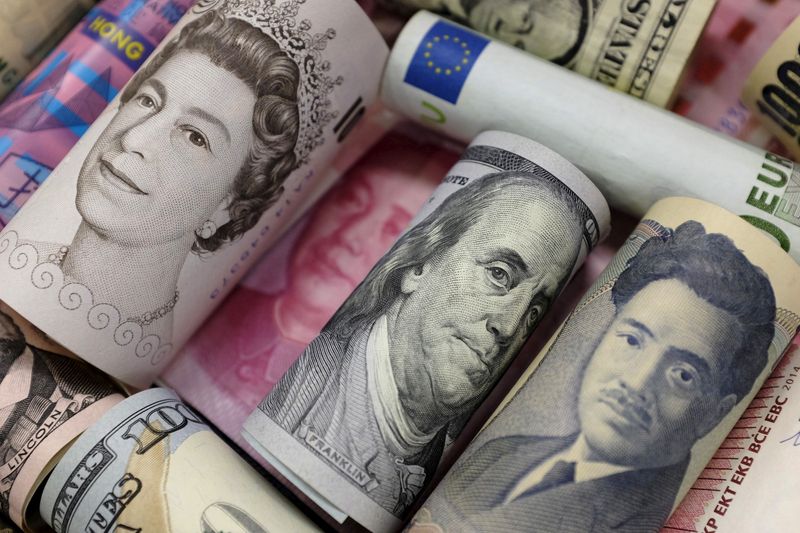By Gertrude Chavez-Dreyfuss
NEW YORK (Reuters) – The dollar fell against most major currencies on Tuesday in choppy trading, weighed down by expectations of a possible policy shift at the Bank of Japan (BOJ) that could end its so-called “yield curve control” and be a precursor to adopting a tighter monetary stance.
The expectations have pushed the yen higher against the dollar over the past few weeks. Since Jan. 6, the yen has surged nearly 5% against the greenback.
Sterling, meanwhile, led gains versus the dollar, hitting a five-week high after data showed the pace of pay growth accelerated again in Britain, closely watched by the Bank of England as it gauges how much higher to raise interest rates.
The market’s focus remained on the BOJ. Speculation is building about a change or end to Japan’s yield curve control (YCC) policy, given that investors have pushed 10-year bond yields above a ceiling set by the BOJ of 0.5% and the amount of bond buying to defend it has become staggering.
Under the YCC policy, the BOJ targets some short-term interest rates at -0.1% and the 10-year government bond yield at 0.5% above or below zero, aimed at achieving a 2% inflation target on a sustained basis.
The BOJ is expected to make a crucial policy decision on Wednesday after a two-day meeting.
“The market is waiting on tenterhooks to see if the BOJ gets on top of this,” said Amo Sahota, executive director at FX consulting firm Klarity FX in San Francisco. “If they do, then dollar/yen is headed toward 126. But I think they’re going to hold steady here, giving the same cautionary tale and wait it out a little bit.”
In afternoon trading, the dollar slid 0.2% against the yen to 128.24 yen.
Against the Swiss franc, the dollar dropped 0.5% to 0.9220 francs.
The Australian and New Zealand dollars rose against the greenback, up 0.5% at US$0.6991 and up 0.8% at US$0.6433 respectively.
The euro fell 0.3% against the dollar to $1.0793, undermined by a Bloomberg News report saying that while a 50 basis-point (bp) rate hike in February remains likely, the prospect of a smaller 25-bp increase in March is gaining support.
The pound rose 0.7% against the dollar to $1.2278, after surging to a five-week peak of $1.2299. Sterling was lifted by data showing UK wages growth increased pace in the three months to November, while employment rose by a faster-than-expected 27,000.
OPTIONS DATA
FX options data showed that the market is anticipating sharp moves when the BOJ meeting ends on Wednesday, with overnight implied volatility surging to a six-year high.
Elsewhere, the U.S. dollar index <=USD was up 0.1% at 102.35.
Since the end of the first trading week of the year, the dollar index has fallen nearly 3%, pressured overall by U.S. data showing consumer prices were rising at a slower pace. That suggested that the Federal Reserve will continue to ease the pace of rate hikes.
“Inflation is moving in the right direction for the Fed and as a result a 25 basis-point hike has been priced in,” said Joe Perry, senior market analyst at FOREX.com and City Index in New York. “The market is in a wait-and-see mode after that, until probably the fall when the market seems to think the Fed will cut rates.”
Data on Tuesday confirmed slowing inflation. The New York Fed’s barometer of business activity in the New York state fell in January to the lowest since mid-2020 as orders plunged and employment growth stalled. The New York Fed’s “Empire State” index on current business conditions plummeted to -32.9 this month from -11.2 in December. Economists polled by Reuters had forecast the index at -9.0.



